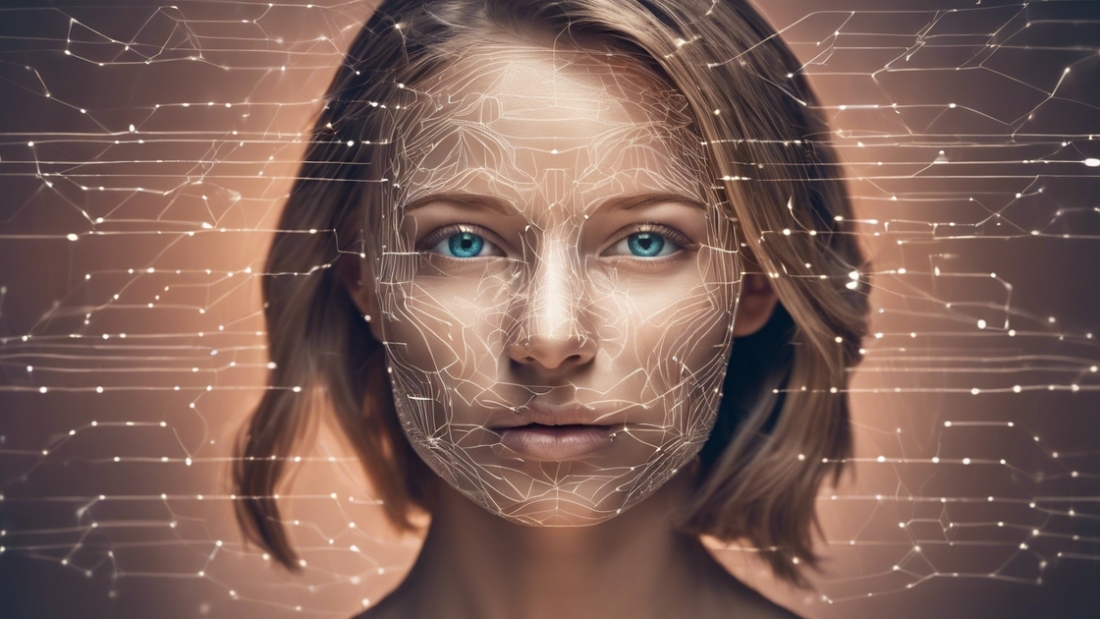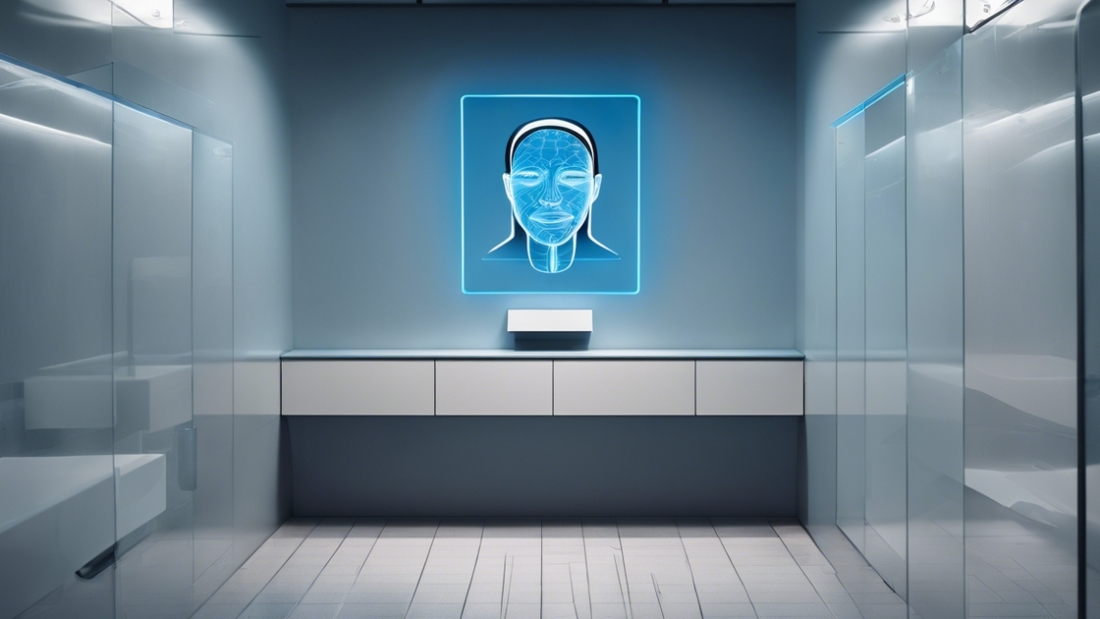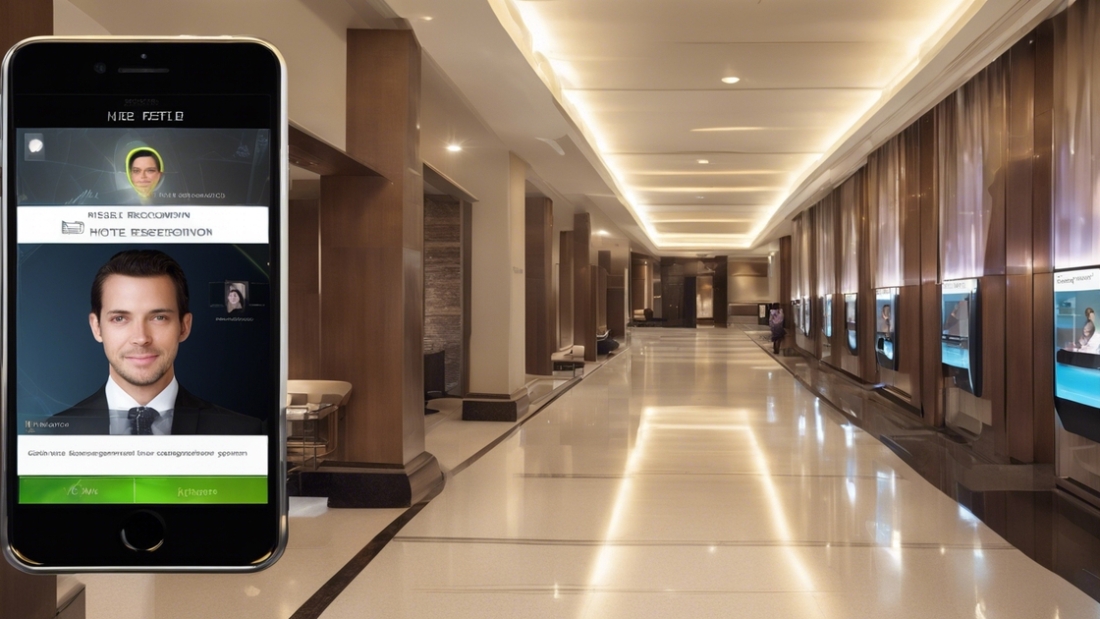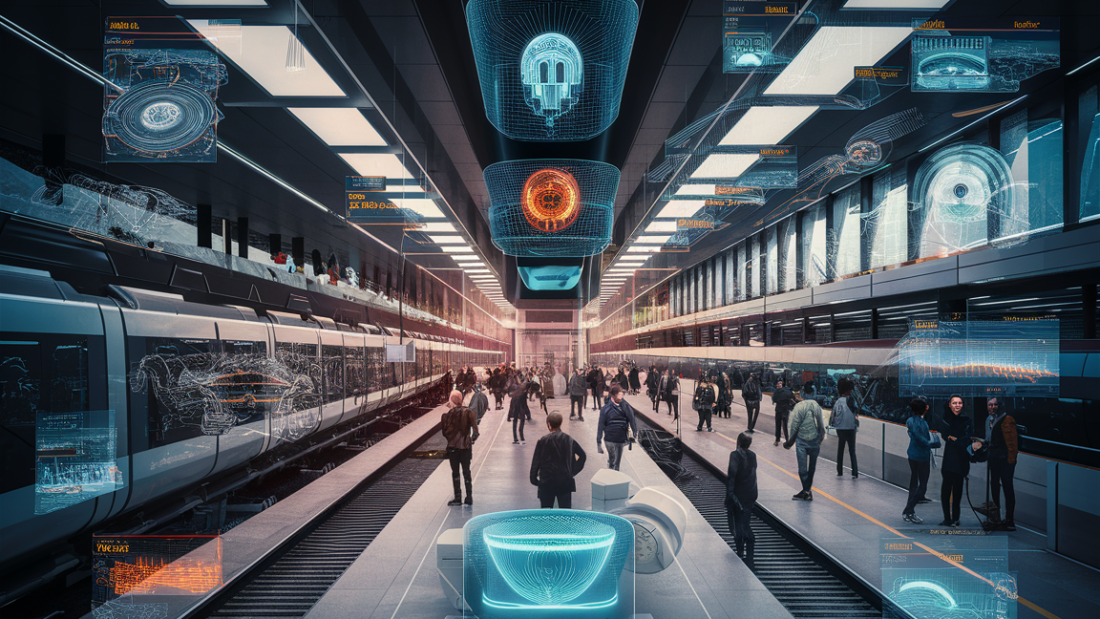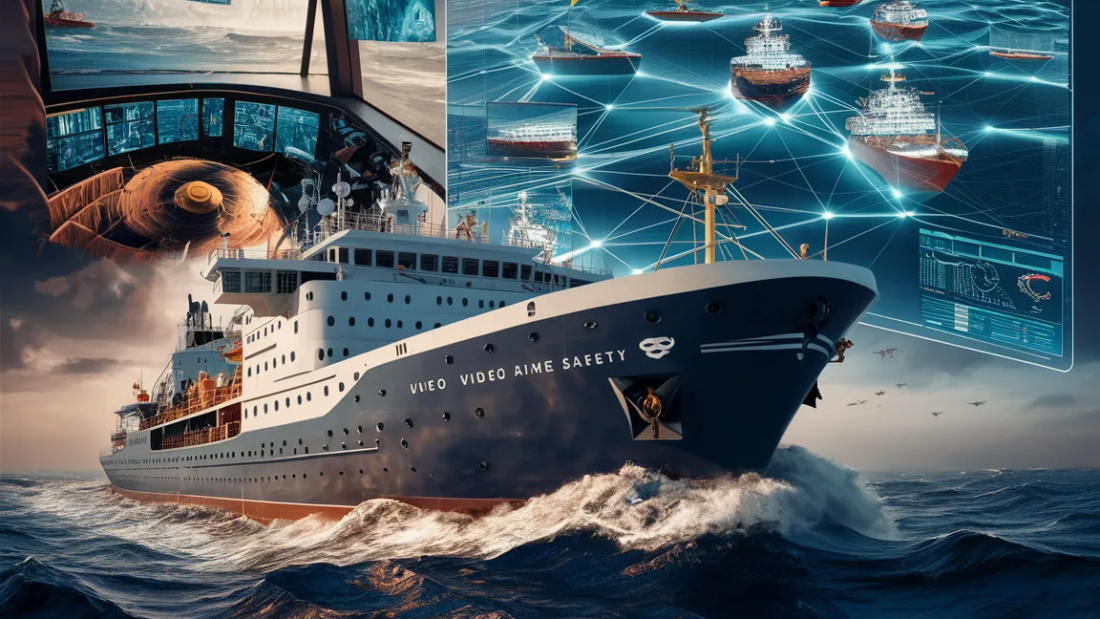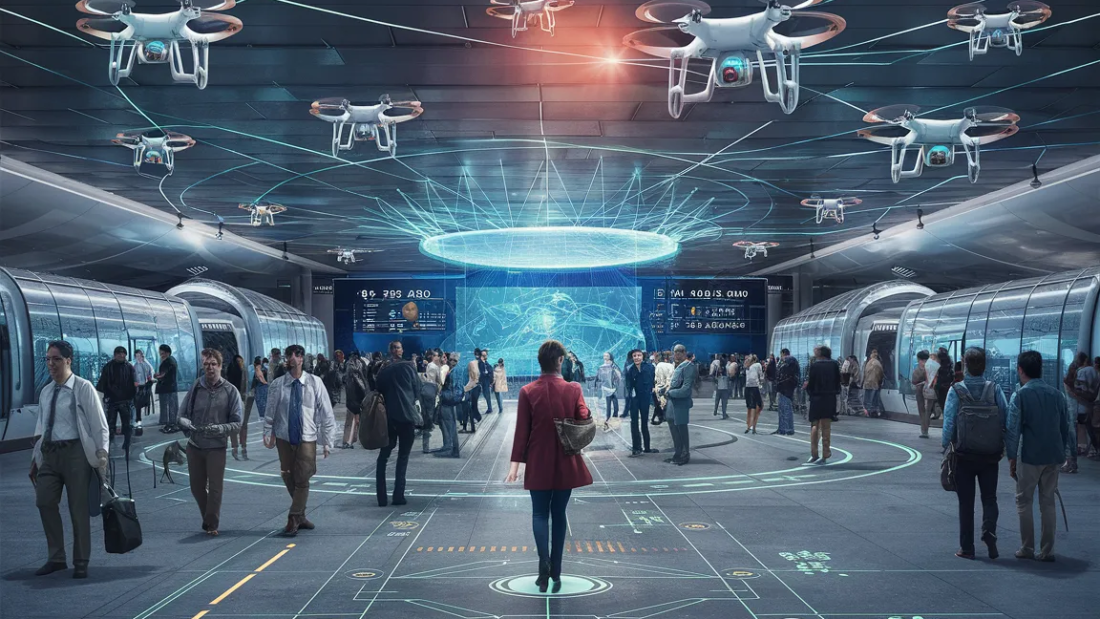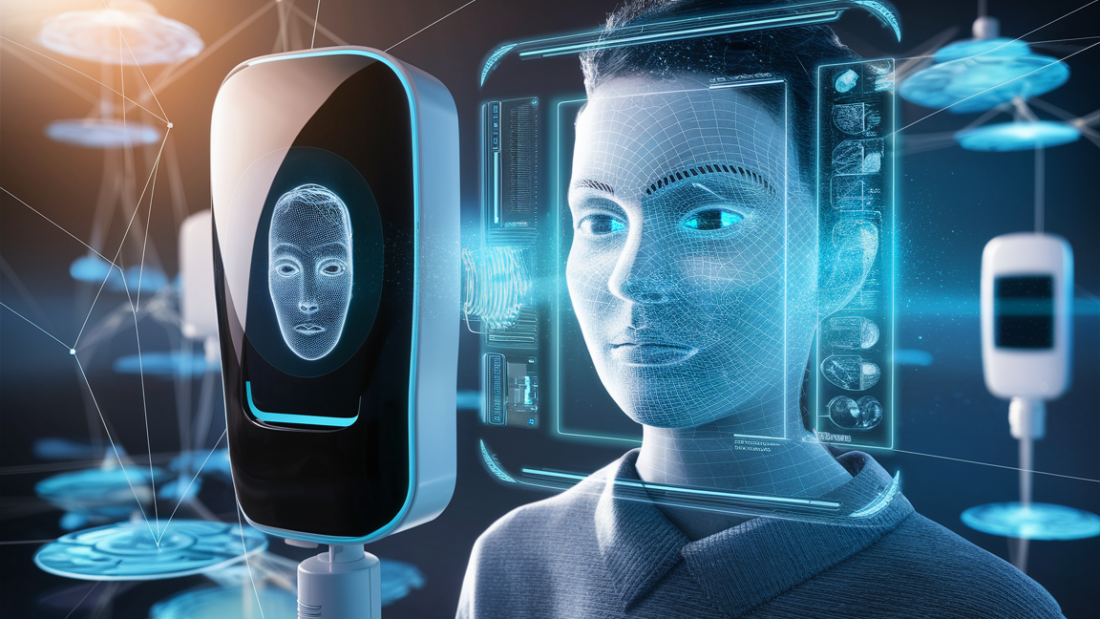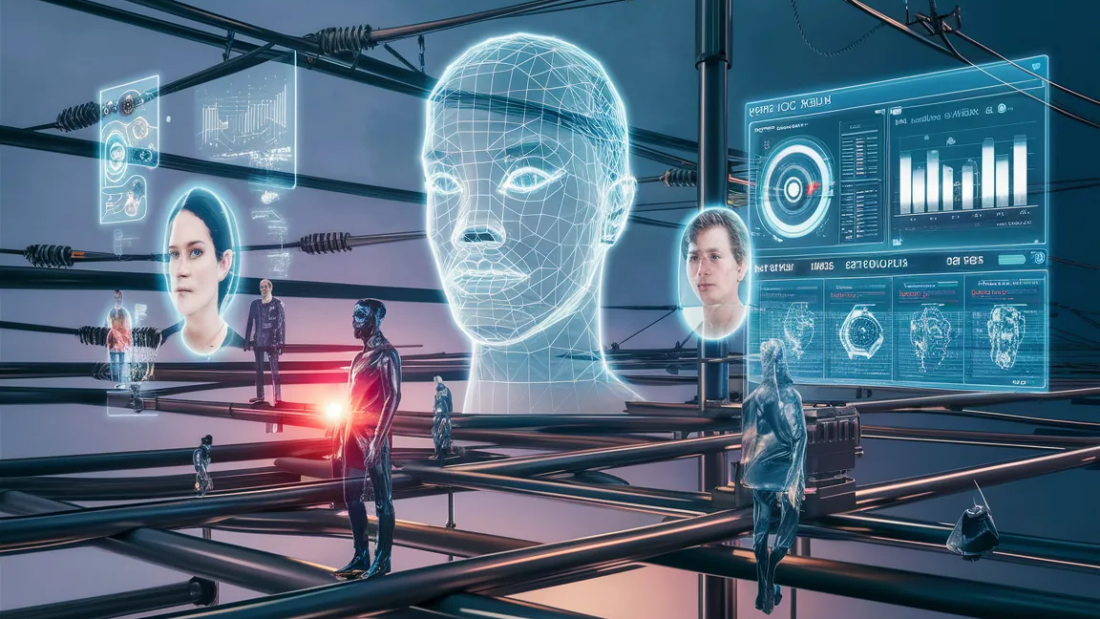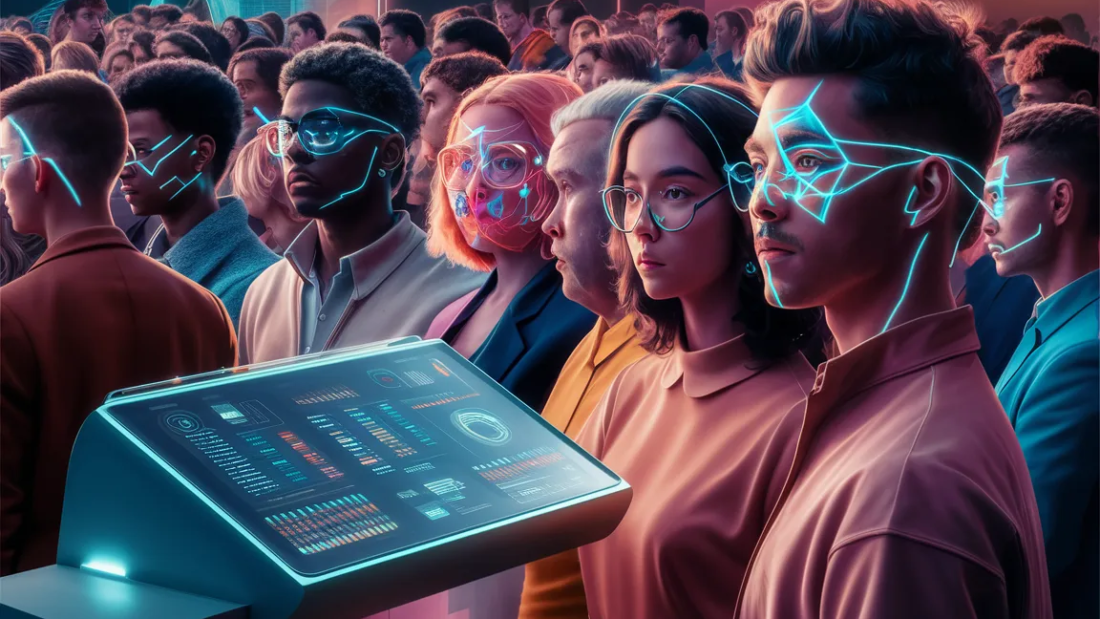In a world where security and convenience collide, face recognition technology emerges as the game-changer. The seamless blend of cutting-edge innovation and user-friendly applications has revolutionized how we interact with devices and safeguard our information. From unlocking smartphones to enhancing surveillance systems, face recognition stands out as the epitome of modern technological advancements. While some marvel at its accuracy and efficiency, others express concerns about privacy and data protection. This dichotomy fuels an ongoing debate about the ethical implications and societal impact of this groundbreaking technology.
Key Takeaways
- Embrace the advancements in facial recognition technology to stay updated with the latest trends in security and identification.
- Implement techniques like 3D facial recognition and machine learning algorithms for more accurate and reliable identification processes.
- Explore the diverse applications of facial recognition across sectors such as law enforcement, healthcare, and retail for improved efficiency and security.
- Utilize facial recognition to enhance digital archives by organizing and accessing vast amounts of data with ease and precision.
- Address privacy and ethical concerns by establishing clear guidelines, consent protocols, and secure data storage practices.
- Stay informed about future trends in facial recognition, such as emotion detection and masked face recognition, to adapt proactively to upcoming developments.
Evolution of Facial Recognition Technology
Origins
Facial recognition technology traces its roots back to the 1960s, with early developments focusing on identifying faces within images. Researchers aimed to create systems that could automatically recognize individuals based on facial features.
DARPA and ARL Advancements
The Defense Advanced Research Projects Agency (DARPA) and the Army Research Laboratory (ARL) played crucial roles in advancing automatic face recognition capabilities. Through initiatives like the Face Recognition Technology (FERET) program, these organizations significantly improved facial recognition algorithms.
Commercialization by Pioneering Companies
Following the success of research programs like FERET, pioneering companies began commercializing facial recognition technology. Corporations such as NEC and Cognitec leveraged these advancements to develop products for various applications, including security, access control, and identity verification.
How Face Recognition Works
Matching Process
Face recognition involves the process of matching a human face captured in digital images or video frames against a database. This comparison utilizes algorithms to analyze facial features such as the distance between eyes, nose shape, and jawline.
Facial recognition systems create a facial template based on these unique features, which is then compared with templates stored in the database. The system identifies individuals by calculating the similarity between the captured face and the stored templates.
User Authentication
One of the key applications of face recognition is in user authentication. ID verification services use facial features to confirm a person’s identity. By comparing live facial images with preregistered photos, these systems determine if the individual is who they claim to be.
Facial authentication offers a secure and convenient way for users to access devices, accounts, or premises. It enhances security measures by adding an extra layer of identity verification through biometric technology.
Biometric Categorization
Facial recognition systems fall under the category of biometrics as they rely on measuring physiological characteristics unique to each individual. These systems analyze facial features that are difficult to forge or replicate, ensuring accurate identification.
Biometric data extracted from facial scans includes details like facial landmarks, textures, and shapes. By converting these features into mathematical representations, systems can efficiently match faces and verify identities across various applications.
Techniques for Accurate Identification
Machine Learning
Machine learning algorithms play a crucial role in face recognition systems by analyzing facial features and patterns. These algorithms learn from vast datasets to accurately identify individuals based on unique characteristics.
3D Facial Recognition
Utilizing depth-sensing technologies, 3D facial recognition captures the unique contours of a face to enhance accuracy. This technique provides more detailed information compared to traditional 2D methods, making it harder to deceive.
Thermal Face Recognition
Thermal imaging is used to capture heat patterns emitted by the face, creating a thermal faceprint for identification. This method is effective in low-light conditions and is less affected by changes in lighting or facial expressions.
Advancements in Accuracy
Recent advancements in facial recognition technology include the integration of artificial intelligence for improved accuracy. These developments enable systems to adapt and learn continuously, enhancing their ability to distinguish individuals accurately.
Challenges in Accuracy
Despite technological advancements, challenges persist in achieving high accuracy levels in facial recognition. One key challenge is bias in algorithms, leading to inaccuracies in identifying individuals from certain demographics. Another challenge is the potential for privacy breaches and misuse of personal data.
List of Challenges:
- Algorithmic Bias
- Privacy Concerns
Applications Across Various Sectors
Human-Computer Interaction
Facial recognition technology revolutionizes human-computer interaction by enabling seamless authentication processes. It enhances user experience and security in devices like smartphones and laptops.
Video Surveillance
In the realm of video surveillance, facial recognition plays a pivotal role in enhancing security measures. It enables real-time identification of individuals in crowded spaces or restricted areas.
Law Enforcement
Law enforcement agencies leverage facial recognition to expedite criminal investigations and maintain public safety. The technology aids in identifying suspects from surveillance footage and databases.
Passenger Screening
Airports worldwide utilize facial recognition for efficient passenger screening processes. This enhances security measures by accurately verifying travelers’ identities before boarding flights.
Employment Decisions
Facial recognition is increasingly used in employment settings for identity verification and access control. It streamlines attendance tracking and restricts unauthorized access to sensitive areas.
Automatic Image Indexing
Facial recognition technology facilitates automatic image indexing by categorizing photos based on recognized faces. This simplifies searching for specific individuals within vast image databases.
Facrying systems have demonstrated remarkable efficacy across various sectors globally. They streamline operations, enhance security, and improve user experiences in diverse applications. For example, in healthcare, facial recognition aids in patient identification and access control to medical records. Moreover, retail establishments use the technology for personalized customer experiences through targeted marketing strategies based on facial analysis.
Pros:
- Enhances security measures
- Streamlines operations in various sectors
Cons:
- Raises concerns about privacy and data protection
- Potential biases in identification processes
Enhancing Digital Archives with Facial Recognition
Efficient Indexing
Facial recognition technology revolutionizes the way digital archives and image databases are managed. By automatically tagging individuals in photos, it streamlines the indexing process, making image retrieval faster and more accurate. This ensures that searching for specific images becomes a breeze.
Improved Retrieval
One key benefit of utilizing facial recognition in digital archives is the enhanced retrieval process. This technology allows users to search for images based on individuals’ faces rather than relying solely on metadata or keywords. As a result, users can quickly locate specific images within vast collections, saving time and effort.
Enhanced Organization
Facial recognition plays a vital role in organizing and managing digital content effectively. It enables the categorization of images based on individuals present in them, creating a structured database for easy access. Moreover, this technology helps in identifying duplicate images and organizing them systematically.
Impact on User Experience
The integration of facial recognition technology in digital archives significantly improves the overall user experience. By providing a seamless and intuitive way to search for images, it enhances user satisfaction and engagement with the platform. Users can effortlessly navigate through extensive image libraries without the hassle of manual sorting.
Reliable Identification
Facial recognition ensures reliable identification of individuals across various images within digital archives. This feature is particularly useful for historical archives or large image repositories where identifying subjects manually can be challenging. Furthermore, it aids in preserving the accuracy and integrity of digital collections.
Ethical Considerations
While facial recognition offers numerous benefits for enhancing digital archives, ethical considerations must also be taken into account. It is crucial to address privacy concerns related to storing and processing biometric data. Additionally, implementing strict security measures to protect sensitive information is essential to maintain trust among users.
Addressing Privacy and Ethical Concerns
Privacy Concerns
Facial recognition technology raises significant privacy concerns due to the potential misuse of personal data. Individuals worry about unauthorized access to their biometric information, leading to identity theft or surveillance without consent. Moreover, the lack of transparency in data collection and storage processes exacerbates these concerns.
The deployment of facial recognition systems in public spaces, such as airports or shopping centers, poses a threat to individuals’ privacy. The constant monitoring and tracking of people’s movements raise questions about data security and the protection of sensitive information. As these systems become more prevalent, the risk of data breaches and misuse of personal data increases.
Ethical Implications
The use of facial recognition technology presents complex ethical implications across various sectors. In law enforcement, there are concerns about potential biases and inaccuracies in facial recognition algorithms, leading to wrongful arrests or discrimination based on race or gender. The lack of clear regulations regarding the ethical use of this technology further complicates the situation.
In the workplace, employers utilizing facial recognition for employee monitoring may infringe upon individuals’ rights to privacy and autonomy. The constant surveillance can create a hostile work environment, impacting employee morale and well-being. Furthermore, the ethical dilemmas surrounding consent and data ownership arise when employees’ biometric data is collected without their explicit permission.
Measures Taken
To address privacy issues and ethical considerations in facial recognition, regulatory bodies have started implementing guidelines and frameworks. These aim to establish clear boundaries for the collection, storage, and use of biometric data, ensuring that individuals’ rights are protected. Organizations developing facial recognition technology are urged to prioritize transparency and accountability in their practices.
e countries have introduced legislation specifically targeting facial recognition technology to safeguard citizens’ privacy rights. For instance, the European Union’s General Data Protection Regulation (GDPR) sets stringent rules for the processing of biometric data, emphasizing the importance of obtaining explicit consent from individuals. These measures aim to strike a balance between technological advancement and individual privacy rights.
Overcoming Challenges and Limitations
Accuracy Concerns
Facial recognition technology has long grappled with accuracy challenges, especially in differentiating individuals with similar features. This limitation can lead to misidentifications, posing significant risks in security and privacy. To address this, researchers are focusing on enhancing algorithms to improve accuracy rates.
In recent years, advancements in deep learning techniques have significantly boosted the precision of facial recognition systems. By integrating neural networks and machine learning models, developers have managed to enhance the technology’s ability to distinguish subtle differences in facial features. This progress is crucial in minimizing false positives and negatives, thereby increasing the overall reliability of facial recognition.
Moreover, the integration of 3D facial recognition technology has shown promising results in overcoming accuracy limitations. By capturing depth information along with traditional 2D images, the system can create more comprehensive facial profiles, reducing errors associated with variations in lighting conditions or angles. This approach enhances the robustness of facial recognition systems, making them more dependable across diverse scenarios.
Diversity and Inclusivity
One major challenge facing facial recognition technology is its bias towards certain demographics, particularly people of color and women. This bias stems from imbalanced datasets used for training algorithms, leading to inaccuracies in identifying individuals from underrepresented groups. To mitigate this issue, researchers are emphasizing the importance of inclusive dataset collection and algorithm development.
To address diversity concerns, researchers are actively working on creating more diverse training datasets that encompass a wide range of ethnicities, genders, and age groups. By incorporating a variety of facial characteristics during training, developers aim to reduce biases and ensure equitable performance across all demographics. This inclusive approach not only improves accuracy but also fosters trust and acceptance of facial recognition technology among diverse populations.
Future Trends in Facial Recognition
Advancements in Technology
Facial recognition technology is rapidly advancing, with cutting-edge developments enhancing accuracy and efficiency. Improved algorithms are being implemented to recognize faces in various conditions, such as low light or partial obstructions. These advancements are crucial for enhancing security systems and streamlining identification processes.
Potential Innovations
In the future, we can expect innovations like emotion detection and behavioral analysis to be integrated into facial recognition systems. This would enable customized user experiences and personalized interactions based on detected emotions. Advancements in 3D facial recognition could provide an added layer of security by creating detailed facial maps for authentication.
Implications for Industries
The evolving landscape of facial recognition technology has significant implications across various industries. In the security sector, advanced facial recognition systems can bolster surveillance efforts and enhance threat detection capabilities. In retail, personalized shopping experiences could be tailored based on customer facial recognition data, leading to increased customer satisfaction and loyalty.
Ethical Considerations
As facial recognition technology progresses, ethical concerns surrounding privacy and data protection become more prominent. Striking a balance between innovation and privacy will be crucial to ensure that facial recognition is used responsibly and ethically. Regulations and guidelines must be established to safeguard individuals’ rights and prevent misuse of sensitive data.
Integration with AI
The integration of facial recognition with artificial intelligence (AI) is poised to revolutionize the field even further. AI-powered facial recognition systems can continuously learn and improve accuracy over time, adapting to new faces and scenarios. This synergy between AI and facial recognition holds immense potential for automating tasks and enhancing security measures.
Challenges to Address
Despite the promising advancements, challenges such as bias in facial recognition algorithms and security vulnerabilities need to be addressed. Ensuring fairness and accuracy in facial recognition across diverse demographics is essential to prevent discriminatory outcomes. Moreover, robust cybersecurity measures must be implemented to safeguard sensitive facial recognition data from potential breaches.
Summary
You’ve delved into the evolution of facial recognition technology, explored how it operates, and its applications across various sectors. Techniques for accurate identification and enhancing digital archives were also discussed, along with addressing privacy and ethical concerns. The challenges faced and future trends were highlighted, providing a comprehensive overview of this innovative technology. As you navigate the realm of facial recognition, remember to stay informed about its advancements and implications. Stay vigilant about privacy issues and ethical considerations as you witness the continuous evolution of this technology. Embrace the opportunities it offers while being mindful of its potential impact on society. Keep exploring new developments and engaging in conversations about the responsible use of facial recognition in our ever-changing digital landscape.
Frequently Asked Questions
How has facial recognition technology evolved over time?
Facial recognition technology has evolved from basic photo comparison to complex algorithms using machine learning. It now offers faster and more accurate identification capabilities, revolutionizing security and personalization in various industries.
How does face recognition work?
Face recognition works by analyzing unique facial features such as the distance between eyes or shape of the nose. Algorithms convert these features into numerical data for comparison with stored templates, enabling accurate identification of individuals.
What are some techniques used for accurate identification in facial recognition?
Techniques for accurate identification in facial recognition include 3D mapping of facial features, deep learning algorithms, and liveness detection to prevent spoofing. These methods enhance the precision and reliability of face recognition systems.
In which sectors are applications of facial recognition technology prevalent?
Facial recognition technology finds applications across sectors like security, healthcare, retail, banking, and transportation. It enhances access control, customer experience, fraud prevention, and personalized services in diverse industries.
How can facial recognition enhance digital archives?
Facial recognition can enhance digital archives by automatically tagging and organizing photos based on recognized faces. This simplifies search and retrieval processes, enabling efficient management of large image databases for individuals and organizations.
What are some common privacy and ethical concerns related to facial recognition?
Privacy and ethical concerns related to facial recognition include data security risks, potential misuse of personal information, bias in algorithms leading to discrimination, and invasion of privacy through widespread surveillance practices.
What are the future trends expected in facial recognition technology?
Future trends in facial recognition technology include improved accuracy through AI advancements, expanded applications in smart cities and IoT devices, enhanced privacy protection mechanisms, and increased focus on ethical considerations to balance innovation with societal concerns.
